Section 4 Assessment Strategies
I.The New Thinking on Assessment
“In a survey on assessment among senior middle school students and teachers, 85.4% of the students thought that their marks in the examination could not completely reflect their development and progress (see Figure 5-3). 61.9% of the teachers and principals believed that scores could basically reflect students' learning (see Figure 5-4). The students hoped that there would be more ways to evaluate their learning and development (see Figure 5-5).” (Common Senior Middle School Curriculum Handbook: the New Concept and Innovation 2006).
Chapter 15 will focus on the assessment of students' learning. The figures mentioned above are used to provoke our thoughts on this: what are proper classroom assessment principles and strategies? How can we perform classroom assessment?
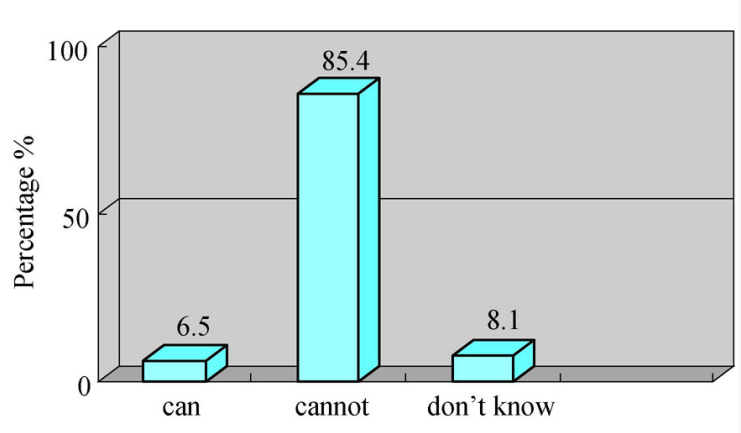
Figure 5-3 Student opinions about whether scores can fully reflect their development
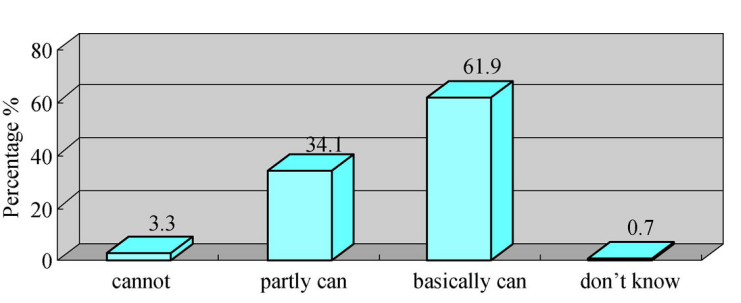
Figure 5-4 Teacher opinions about whether scores can fully reflect students' development
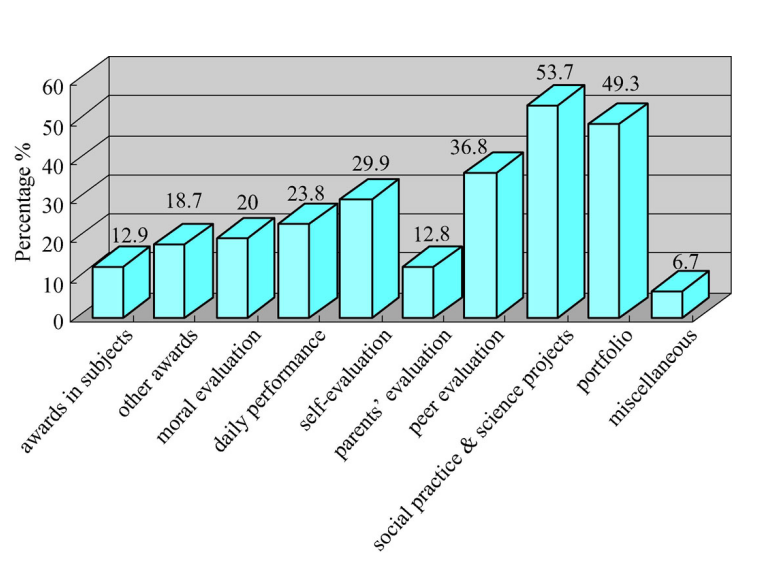
Figure 5-5 Methods of assessment that the students expect
II.Concept and Purpose of Classroom Assessment
“Classroom Assessment Techniques are tools for collecting data on students learning to improve it. Classroom assessment is an important part of classroom research and it is a way for teachers and students to monitor their teaching and learning” (Angelo & Cross, 1993, cited in Wang, 2002: 64). Classroom assessment includes both assessment of teaching and learning.
The assessment of teaching will be introduced in Chapter 16, and this section will focus on assessment of learning.
The objectives of classroom assessment of learning are as follows (Lu & Wang, 2006: 180):
●check how well students master what they have learned in class;
●check students' use of strategies;
●check students' monitoring of their own learning process;
●check how well the teaching is done;
●identify the problems that students have;
●identify the problems in the teaching process;
●identify the problems with the assessment strategy itself;
●provide feedback for students to adjust their learning plans;
●provide feedback for students to adjust their use of learning strategies; and
●provide feedback for teachers to adjust their teaching methods.
III.Principles of Classroom Assessment
The factors that affect classroom assessment include our teaching philosophies, students' roles, timing of classroom assessment in class teaching, what to evaluate, and how to evaluate and give feedback (ibid., 181) .
Wang (2002: 70) stated that assessment should adhere to the following principles. Firstly, we should be aware of the purpose of different assessment strategies, and let our students know their importance, procedures and roles. Secondly, we should have assessment in our daily teaching process to monitor learning and teaching in real-time. Thirdly, we should respect the principle of efficiency, which means we should guide our students to learn how to evaluate by asking them to do self-assessment. We should also respect the principle of feedback, which means we should offer our students feedback about the assessment and their problems, and help them to make future learning plans. Lastly, we should respect the principle of change, which means we should know the suitability of different assessment strategies, and vary the types of assessment according to different situations (e.g. use peer assessment in pair or group work). Lu and Wang (2006: 183) also put forward further principles, which are the principles of being focused, process, efficiency, change, being student-centred, being comprehensive, and development.
From what is outlined above, we know that our students should not be passive in the assessment. Instead, they should play an active role. They should have some knowledge of classroom assessment and receive timely feedback. The assessment we use in class should not be limited to quizzes or tests. We should employ a variety of methods in order to reflect our students' different abilities and proficiency. The interaction patterns should not be limited to teacher-students; instead, the interaction patterns should include teacher-student, students-students, and student-student.
IV.Strategies of Classroom Assessment
●Methods of assessment: self-assessment, peer assessment, teacher assessment.
●Tools for assessment: questionnaires, quantitative surveys, question and answer, verbal discussions.
●Content or Design of assessment: assessment of knowledge and skills, assessment of learner attitude, assessment of value, assessment of self-awareness, assessment of learning strategy, assessment of learning process, assessment of learner difficulty.
●Examples of classroom assessment
a.Self-assessment (see Table 5-2 & Table 5-3)
Table 5-2 Students' self-assessment of their performance in class

Table 5-3 Self-assessment of learning activities (Tick the box)
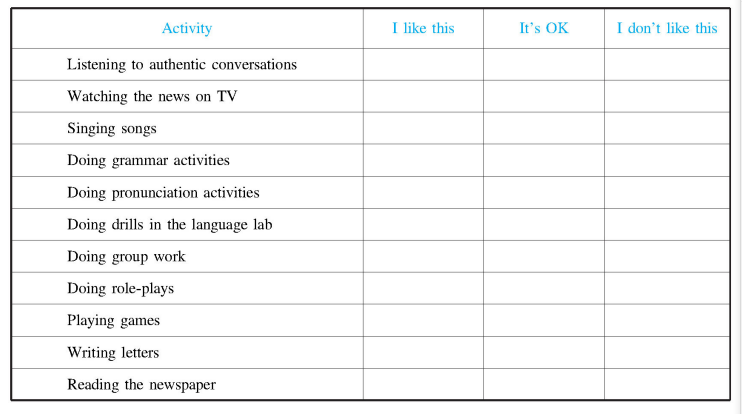
b.Peer-assessment (see Table 5-4)
Table 5-4 Peer-assessment example
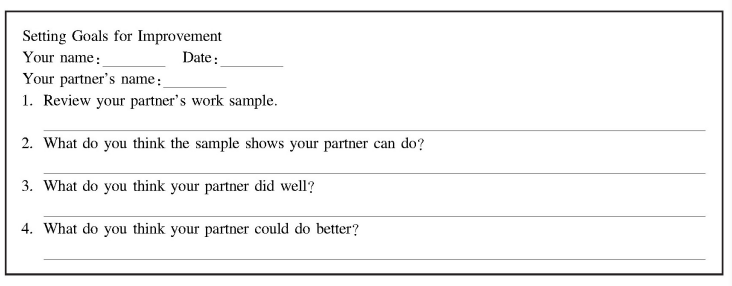
c.Teacher-assessment: Self-assessment and peer assessment should be combined with teacher assessment. We should provide feedback on our students' learning, write comments on their daily performance, fill in students' behavior assessment forms, and interview them. We can also evaluate their learning at any time (e.g. through class discussion or by checking students' writing) . Students' answers to questions in class can also be used to assess their learning (Luo, 2003: 28) .
After learning assessment strategies, let’s do some exercise to consolidate what we have learned.
